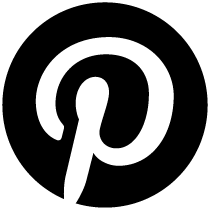The Best Shows to See in Milan Right Now
From Shirin Neshat’s haunting films to Sam Lock’s minimalist canvases, here’s what not to miss during miart
From Shirin Neshat’s haunting films to Sam Lock’s minimalist canvases, here’s what not to miss during miart

Shirin Neshat | PAC Padiglione d'Arte Contemporanea | 28 March – 8 June

As one of Italy’s first venues solely dedicated to contemporary art, PAC is renowned for spotlighting key members of the international art scene. This spring, they are showing iconic Iranian artist Shirin Neshat’s ‘Body of Evidence’, marking her first major solo show in the country. Taking over PAC’s sprawling spaces, this comprehensive survey of the artist’s three-decade practice brings together almost 200 photographs alongside ten video installations. Highlights include Neshat’s seminal black and white photographic series ‘Women of Allah’ (1993–97), a profound investigation into the complexity of female identity in post-revolutionary Iran, portraying veiled women, often in defiant poses, overlaid with hand-written lyrical lines by feminist Iranian poets; and The Fury (2023), a highly-stylised, double-channel video installation which continues Neshat’s inquiry into female bodies as battlegrounds.
‘POOR BUT SEXY’ | eastcontemporary | 4 March – 12 April

In 2003, former Berlin Mayor Klaus Wowereit famously called the city ‘poor but sexy’, aiming to lure creatives with low rent and expansive infrastructure. It was an exceptionally successful rebrand of post-Wall Berlin and, as this eponymous group show posits, a slogan that served as an emblem of how post-1989 Eastern Europe was framed and sold in the West. Orientalised and cast as outsiders, Eastern Europeans often internalised this submissive relationship. ‘POOR BUT SEXY’ unpacks this complicated power dynamic, navigating history, memory and identity through the works of six artists, spanning generations, media and countries. In Ala Savashevich’s inkjet-printed video still Pose. Position. Way (2023), a pair of high heels made from Soviet red stars poke painfully into the feet wearing them – a darky playful implication that the old legacies might not be quite as distant as we hoped. Elsewhere, Anastasia Sosunova’s lithograph Fiction from the ‘Refigured’ series (2023), is an homage to Lithuania’s underground printing house ab (1980–90), and a raw meditation on resistance and identity under political censorship.
Goshka Macuga | Vistamare | 5 April – 31 May

In his short story ‘Guts’ (1973), Charles Bukowski wrote: ‘I like desperate men, men with broken teeth and broken minds and broken ways. They interest me. They are full of surprises and explosions.’ For Goshka Macuga, this tension between chaos and transformation is the stuff life is made of. In a series of captivating, vibrant and explosive oil paintings, Macuga captures the aftermath of natural disasters (Atoms Rearranged, 2024), war (The Tale of Wang Tu, 2025) and environmental collapse in an attempt to portray the fragile balance between destruction and renewal. A lone wolf, wandering through a post-apocalyptic landscape (Untitled, 1996) offers a message of hope: that, despite it all, there is still survival and reinvention.
Thierry De Cordier | Fondazione Prada | 3 April – 29 September

For ‘NADA’, Thierry De Cordier has turned the vast Cisterna rooms of Fondazione Prada into a spartan space for deep contemplation on the elusive concept of nothingness. Ten of the Belgian artist’s large-scale, eponymous paintings have been suspended along the three rooms of the former distillery which, thanks to their sheer height and tall windows, recast the works in a sacred role. A bench is placed in front of the monumental Gran Nada (2007–12), its deep black hues revealing depths and layers, just as shapes gradually emerge as our eyes become accustomed to darkness. Initially, De Cordier’s black monochrome paintings were intended as an act of erasure of the crucifixion, the ultimate Christian image. However, they took on a more profound dimension when the artist encountered the words of the sixteenth century Spanish mystic St John of the Cross and his ascetical search for ‘the nothing’. For De Cordier, translated into art, this becomes a quest for the ultimate achievement in painting: the sublime.
Yukinori Yanagi | Pirelli HangarBicocca | 27 March – 27 July

Pirelli HangarBicocca’s industrial Navate and Cubo spaces host the remarkable work of the Japanese artist Yukinori Yanagi in his first major retrospective in Europe. Charting over three decades of his career, the exhibition brings together some of his key multimedia, immersive pieces, including the renowned The World Flag Ant Farm 2025 (2025). This stirringly poetic evisceration of nationalism consists of 200 world flags made from coloured sand poured into plexiglass boxes connected by tubes, their borders gradually dissolved by thousands of live ants tunnelling dutifully through the sand. Elsewhere, the monumental labyrinth Icarus Container 2025 (2025), which lends its name to the show, is a cautionary work, and a tribute to the Greek myth of Icarus and Dedalus. As visitors walk through the maze, Yukio Mishima’s galvanising verses from his poem Icarus (1968) are engraved on mirrors, a powerful indictment of our obsession with technology: ‘Why, still, should the lust for ascension / Seem, in itself, so close to madness?’
Sam Lock | Cadogan Gallery | 26 February – 12 April

In a 2019 interview with The London Magazine, British artist Sam Lock spoke of the importance of art and imagination as tools with which to ‘redress in some way the blankness and dumbing down of the world’. His latest exhibition at Cadogan Gallery’s Milanese venue does just that, unfolding like a visual poem through more than 70 works. Brushstrokes, traces and marks in blues and whites disappear and reappear on other works, highlighting the bond between the works themselves – the links between fragment and whole – and the artist’s ongoing preoccupation with presence and absence. The five larger works, Stanza I-V (all works 2024), have been cut and stretched from the same roll of raw canvas, whereas the smaller pieces, Fraction 1 – 34, which dot the gallery like musical notes, have been painted on paper pasted to resin-coated, sanded panels. The resulting show is a testament to the undeniable power of art to alter and nurture us.
Gian Maria Tosatti | Galleria Lia Rumma | 21 March – 8 May | Ex Magazzini Raccordati | 22 March – 11 April

Gian Maria Tosatti is best known for his ambitious, large-scale, immersive installations that transform neglected urban spaces into poignant investigations into identity and politics. In his latest endeavour, Tosatti presents two concurrent shows. ‘Paradiso’ consists of a site-specific installation set in the 3000 square metres of the cavernous Ex Magazzini Raccordati, a former warehouse space located beneath Milan Central Railway Station. The dripping underground vaults offer a vision of a dystopian paradise worthy of an Octavia Butler novel, its seven vaults of heaven symbolically caved in, angels replaced with the homeless, the garden of Eden with filthy latrines and puddles. This, we are warned, is the heaven that humanity’s destructive nature is capable of wreaking. Over at Galleria Lia Rumma, ‘Es Brent!’ features new multi-media works and paintings that form a scathing critique of the world today. Part of his project Fondamenta (2011-ongoing), six large transparent flags hang from tall poles just outside the gallery, alluding to the invisible hands governing our world, while, inside, a series of paintings from the ‘Fireworks’ series (2024) depict night skies under bombardment. The exhibition borrows its title from Mordkhe Gebirtig’s celebrated Yiddish song, whose verses ‘Everything now burns! And you stand there looking on, hands folded’ are as prophetic today as they were in 1938.
Main image: Goshka Macuga, Big and Small Blasts, 2025, oil on canvas, 1.9 × 2.5 m. Courtesy: the artist and Vistamare, Milano / Pescara
















